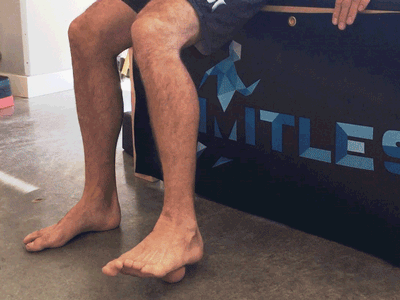Plantar Fasciitis causes – and how to 'Heel' it
plantar fasciitis treatment sydney
Plantar fasciitis (Plantar fasciopathy as it is now known) is a common cause of heel pain. It is an overuse injury of the plantar fascia, which is a band of tissue located on the bottom of the foot. The plantar fascia is a thick connective tissue that connects the heel bone to the toes to form the arch of your foot (the longitudinal arch). This band plays a crucial role in normal foot biomechanics as it provides static support for the longitudinal arch of the foot and dynamic shock absorption.
Who Gets Plantar Fasciitis?
Plantar fasciitis usually occurs in two groups of people:
The non-athletic population: Usually this occurs in the older adult who has increased their walking in less supportive footwear, may have increased BMI and/or stands a lot with work.
In runners. It can present as a running injury due to a sudden increase in training volume, change in running surface, poor running patterns, or inappropriate running shoes. Any or all of these things can overload the plantar fascia.
What are the symptoms of Plantar Fasciitis?
A person with Plantar Fasciitis usually presents in the acute stage with:
Pain in the heel that gradually increases. Pain is generally on the inside part of the heel.
Symptoms such as pain and stiffness that are worse in the morning.
Symptoms can be eased by exercise but after prolonged walking/exercise it pain may increase.
As the condition progresses the pain may be present with weight bearing, even in standing.
What causes plantar fasciitis to flare up?
As mentioned above the most common cause or a "flare up" in runners are:
sudden increases in training volume
change in running surface
change in running pattern due to another injury
inappropriate shoe type
certain exercises: Activities that stress the plantar fascia and attached tissue — like long-distance running, ballet dancing, or aerobic dance.
foot mechanics: Being flat-footed, having a high arch, or even having an abnormal walking pattern can affect weight distribution while standing or moving, straining the plantar fascia.
What are my treatment options?
Plantar fasciitis can be difficult to manage, and treatment often involves working with a physical therapist. It is important to address it early. In the early stages, the primary focus is to “calm” things down. Here are some steps to treat plantar fasciitis:
See a Physio for a biomechanical assessment and to rule out any other causes of foot/heel pain, to identify any risk factors for developing plantar fasciitis and to begin early intervention to ensure you start in the right direction in managing this problem.
Off load the tissue! The quickest and cheapest way to achieve this is through taping and choosing comfortable footwear with good arch support. Additional considerations include using gel heel cups for support and cushioning around the plantar fascia.
Modify your activity. You may need to break up long periods of walking/running to avoid aggravating the area.
Soft tissue therapy and plantar fasciitis exercises, including stretching of the foot, calf, hamstring, and glutes for 20 minutes. Here are some examples of exercises and stretches:
Load the tissue. Once the tissue has began to “calm down”, it is imperative to begin a gradual loading program. Beginning strengthening exercises for the muscles that support the foot can be started in the early stage. Once your symptoms settle, the focus should be on building the load capacity of the plantar fascia and through the rest of the lower limb. Progression through the loading stage is where advice from your physio becomes most important. Loading should begin as an isometric or static hold and be progress as your injury heals.
Final Thoughts
In addition to these measures, you might also consider exploring whether you have a heel spur, which is a bony growth that can sometimes accompany plantar fasciitis. Similarly, if you have high arches, you may want to take extra care to ensure your footwear provides adequate arch support. Issues with the Achilles tendon can also contribute to plantar fasciitis, so it's important to ensure that this area is healthy as well.
Lastly, ensure you spend at least 20 minutes a day on your treatment regimen, whether stretching, strengthening, or other forms of physical therapy. This consistent, daily attention to your condition can significantly speed up your recovery.
In conclusion, plantar fasciitis is a common cause of heel pain that can be effectively managed with the proper care and attention. Whether you're an athlete or someone who's on their feet a lot, it's important to understand how to prevent and treat this condition to maintain your foot health.
If you are suffering from heel pain and think you may have this problem, call the clinic on 0289709166 and come in for an assessment. The key to a speedy recovery is early diagnosis and treatment!





